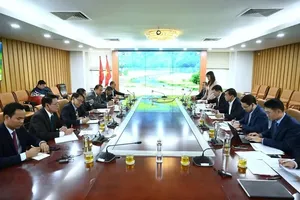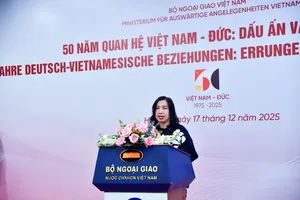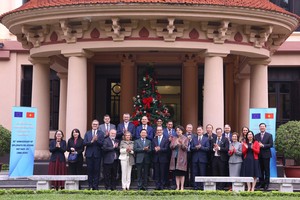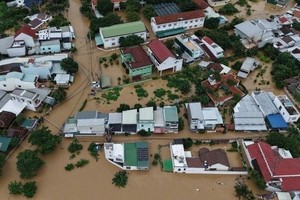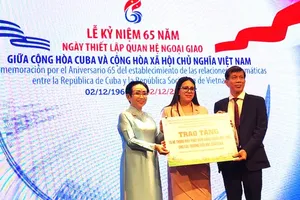 Vietnam will gradually phase out coal-fired power and stop building new plants of this kind. (Photo: VNA)
Vietnam will gradually phase out coal-fired power and stop building new plants of this kind. (Photo: VNA)
Accordingly, Vietnam will gradually phase out coal-fired power and stop building new plants of this kind.
The Ministry of Industry and Trade (MoIT) said coal-fired thermal power accounts for more than 30 percent of the total supply and plays an important role in ensuring national energy security.
The energy sector is working to reduce emissions as well as its reliance on fossil fuels towards the target of net zero emissions in the next decades, the ministry added.
Under Power Development Plan VIII submitted to the Prime Minister, Vietnam will not build new coal-fired power plants, reduce the number of new projects to the minimum by 2045, and gradually scrap old factories equipped with outdated technologies.
Vietnam expects to generate some 146,000MW by 2030 and 343,000MW by 2045, down about 14,800 MW compared with Power Development Plan VII.
Experts, however, have suggested Vietnam sketch out a suitable roadmap to ensure national energy security.
Mathias Hollander, senior manager of the Global Wind Energy Council (GWEC), said Vietnam has long coastlines and the potential for wind power, especially offshore.
Mark Hutchinson, Chair of the GWEC’s Southeast Asia Taskforce, said the target of 10GW from offshore wind power is achievable for Vietnam, noting that the energy will help the country stay away from risks of the global market that is forecast to experience uncertainties in the time ahead.
Stuart Livesey, CEO of the La Gan Wind Power Development Corporation and Country Director of Copenhagen Offshore Partners (COP) in Vietnam, suggested Vietnam devise specific strategies and plans, and have suitable funding for energy.
Experts shared the view that Vietnam’s commitments at COP26 could be reached with suitable legal frameworks and policies.
